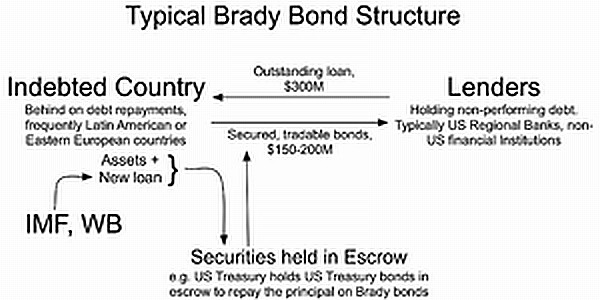Lasry’s Credit Cabal Gets Top Energy Future Gem Distressed Debt Bloomberg Business
Post on: 29 Апрель, 2015 No Comment

Marc Lasry, chief executive officer and co-founder of Avenue Capital Group. Photographer: Michael Nagle/Bloomberg
May 5 (Bloomberg) — A group of Energy Future Holdings Corp.’s unsecured bondholders including billionaire Marc Lasry’s Avenue Capital Group are poised to walk off owning the most profitable asset of the bankrupt power producer after engineering a deal to avoid a free-for-all restructuring.
The value of $1.6 billion of notes held by those creditors and issued by the regulated unit of the Dallas-based company that sought Chapter 11 protection April 29 jumped by about $260 million to almost within 1 percentage point of face value after a pre-arranged bankruptcy plan was filed in federal court. The bonds have risen more than $480 million since they started climbing at the beginning of April.
Avenue, York Capital Partners, GSO Capital Partners LP, Third Avenue Management LLC and P. Schoenfeld Asset Management LP held 76 percent of those securities when the former TXU Corp. filed for court protection, according to a bankruptcy document. They are slated to take control of more than half the ownership of the restructured regulated part of the power producer that includes Oncor Electric Delivery Co. Higher-priority noteholders agreed to accept new loans in exchange for their holdings or a cash payout funded by debt that will be layered onto the company.
Notes Gain
“The restructuring support agreement is an important first step toward a consensual and timely Chapter 11 reorganization,” Chief Financial Officer Paul Keglevic wrote in a court filing. Energy Future’s units believe “that the global restructuring represents the best opportunity to conclude their Chapter 11 cases in a swift and tax-efficient manner that will maximize the value of their estates,” he wrote.
Oncor may be the most coveted unit because of its regulated, steady earnings, with Bloomberg Industries valuing it at more than $15 billion. Legal safeguards were put into place to keep the subsidiary protected during bankruptcy proceedings.
The 11.25 percent notes due December 2018 were quoted at 98.9 cents on the dollar at 4 p.m. in New York, up from 82.5 cents on April 29 as Energy Future and some of its creditors said they agreed to a blueprint for a reorganization, according to prices compiled by Bloomberg.
KKR & Co. TPG Capital and the private-equity unit of Goldman Sachs Group Inc. which took Energy Future private for $48 billion in 2007 in the largest-ever leveraged buyout, had initially demanded a 15 percent ownership stake in a reorganized company. The plan being considered by the bankruptcy court in Wilmington, Delaware, and agreed to by “key financial stakeholders,” according to Energy Future Chief Executive Officer John Young, will give them less than 1 percent.
Converting Loan
Holders of the unsecured notes, as well as Fidelity Investments, which owns some secured bonds issued by the same unit, can exchange those obligations for a $1.9 billion debtor-in-possession loan that will convert into a 64 percent ownership stake in the reorganized parent, according to a restructuring agreement filed with the court and a person with knowledge of the deal. The new corporation won’t include the deregulated units that will spin off under the ownership of first-lien lenders to that part of the company.
U.S. Bankruptcy Court Judge Christopher Sontchi is scheduled to consider debtor-in-possession, or DIP, financing on June 5. The trustee for second-lien creditors owed more than $2 billion by the regulated unit filed an objection to that deal, saying creditors are due a $700 million prepayment premium that cannot be supplanted by the DIP loan, which would be senior to their holdings in the corporate structure.
Distressed Specialist
Lasry, who teamed up with Fortress Investment Group LLC co-founder Wesley Edens last month to buy the National Basketball Association’s Milwaukee Bucks, has specialized in distressed debt for more than a quarter-century. In 1989, he and his sister Sonia Gardner set up a $100 million partnership in association with Texas investor Robert Bass, whose family made a fortune exploring for oil. Avenue Capital Group, co-founded by Lasry and Gardner in 1995, had $12.6 billion under management at the end of last year, according to its website.
GSO Capital Partners LP, the credit unit of Blackstone Group LP, was co-founded in 2005 by Bennett Goodman, Tripp Smith and Doug Ostrover. Goodman started his career in speculative-grade debt at Drexel Burnham Lambert Inc. in the 1980s, working with Michael Milken as he was pioneering the use of junk bonds in buyouts.
GSO, which was acquired by Blackstone in 2008, had $65 billion of assets under management at the end of last year, according to a regulatory filing.
Gas Bet
Third Avenue Management, a part of Affiliated Managers Group Inc. was founded by famed investor Martin Whitman, 89, who is known for targeting companies he considers undervalued based on measures such as profit or revenue. Whitman gave up his investment post at Third Avenue in 2010.

Peter Schoenfeld’s firm is best known as a merger arbitrager, investing in targets of acquisitions and subjects of other corporate events.
Todd Fogarty, an Avenue spokesman who works for Kekst & Co.; Peter Rose, a spokesman for New York-based Blackstone; Steven Bruce, a PSAM spokesman who works for ASC Advisors LLC; and Bridget Wysong, a spokeswoman for Third Avenue, didn’t immediately comment on the restructuring. Mary Beth Grover, an Abernathy MacGregor Group spokeswoman for York, declined to comment. Allan Koenig, a spokesman for Energy Future, declined to comment beyond the court filings.
Tax Bill
The power producer’s acquisition at the peak of the buyout boom in 2007 was essentially a bet, using $40.1 billion of debt and an $8.3 billion equity check, that natural gas prices would rise. Instead, prices have fallen more than 65 percent since July 2008. Gas prices set the cost of electricity in the deregulated Texas market.
That left the part of the company that owns energy wholesaler Texas Competitive Electric Holdings Co. unprofitable. The other major unit controls the money-making and regulated Oncor.
Energy Future earned $5 million in the third quarter of 2013, its first net income since the fourth quarter of 2010, according to data compiled by Bloomberg. The regulated unit made $315 million in 2012 compared with its deregulated subsidiary, which lost $2.95 billion.
The pre-arranged deal being considered by the bankruptcy court would break up Energy Future without triggering a tax bill that could have ballooned to more than $7 billion, people with knowledge of the matter said. The consummation of the proposal may allow the company to complete a restructuring in as few as 11 months, according to filings, rather than a free-for-all that could have taken years to resolve.
To contact the reporter on this story: Richard Bravo in New York at rbravo5@bloomberg.net
To contact the editors responsible for this story: Shannon D. Harrington at sharrington6@bloomberg.net Mitchell Martin














